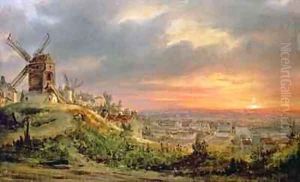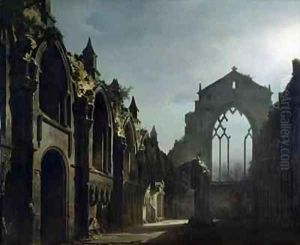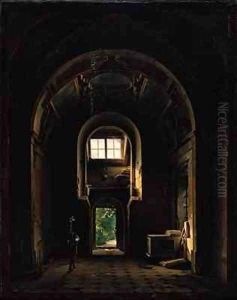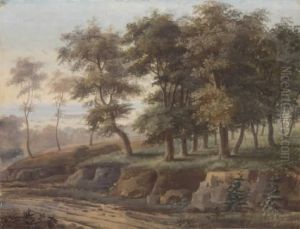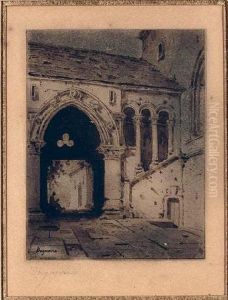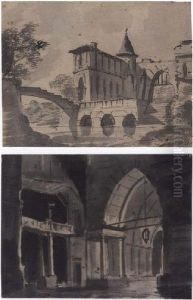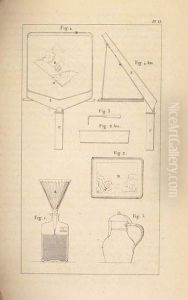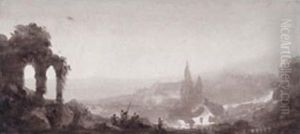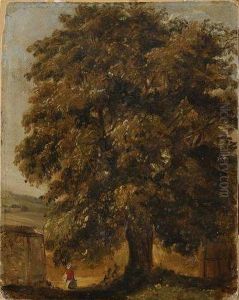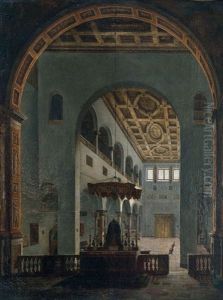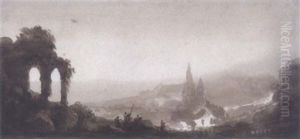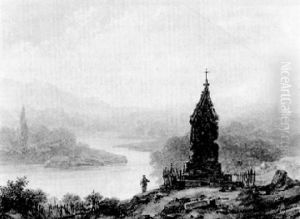Louis Jacques Mande Daguerre Paintings
Louis Jacques Mandé Daguerre was a French artist and photographer, recognized for his invention of the daguerreotype process of photography. He was born on November 18, 1787, in Cormeilles-en-Parisis, Val-d'Oise, France. Before his involvement in photography, Daguerre was a successful commercial artist and theater designer who created elaborate stage designs and lighting techniques.
In the early 1820s, Daguerre partnered with the inventor Nicéphore Niépce, who had been experimenting with ways to capture images using light-sensitive materials. After Niépce's death in 1833, Daguerre continued experimenting and eventually developed a more efficient and practical process, which he named the daguerreotype. This process, revealed in 1839, involved exposing a silver-plated copper sheet to iodine vapor, making it light-sensitive, and then exposing it to light. The image was then developed with mercury vapor and fixed with a salt solution, producing a sharp and detailed image.
Daguerre's invention was a significant breakthrough and marked the beginning of practical photography. The French government purchased the patent for the daguerreotype process and awarded Daguerre a lifetime pension. In exchange, the process was made free for anyone to use in France, while Daguerre retained the patent rights for England.
Daguerre's contribution to the field of photography was monumental, as it allowed for the accurate and durable preservation of images and made photography accessible to the general public. The daguerreotype became extremely popular, especially for portrait photography, and it dominated the field until the mid-1850s when less expensive processes that produced paper prints became available.
Louis Daguerre died on July 10, 1851, in Bry-sur-Marne, France. Today, he is remembered as one of the pioneers of photography, and his innovation in the creation of the daguerreotype has secured him a permanent place in the history of photography and visual arts.
